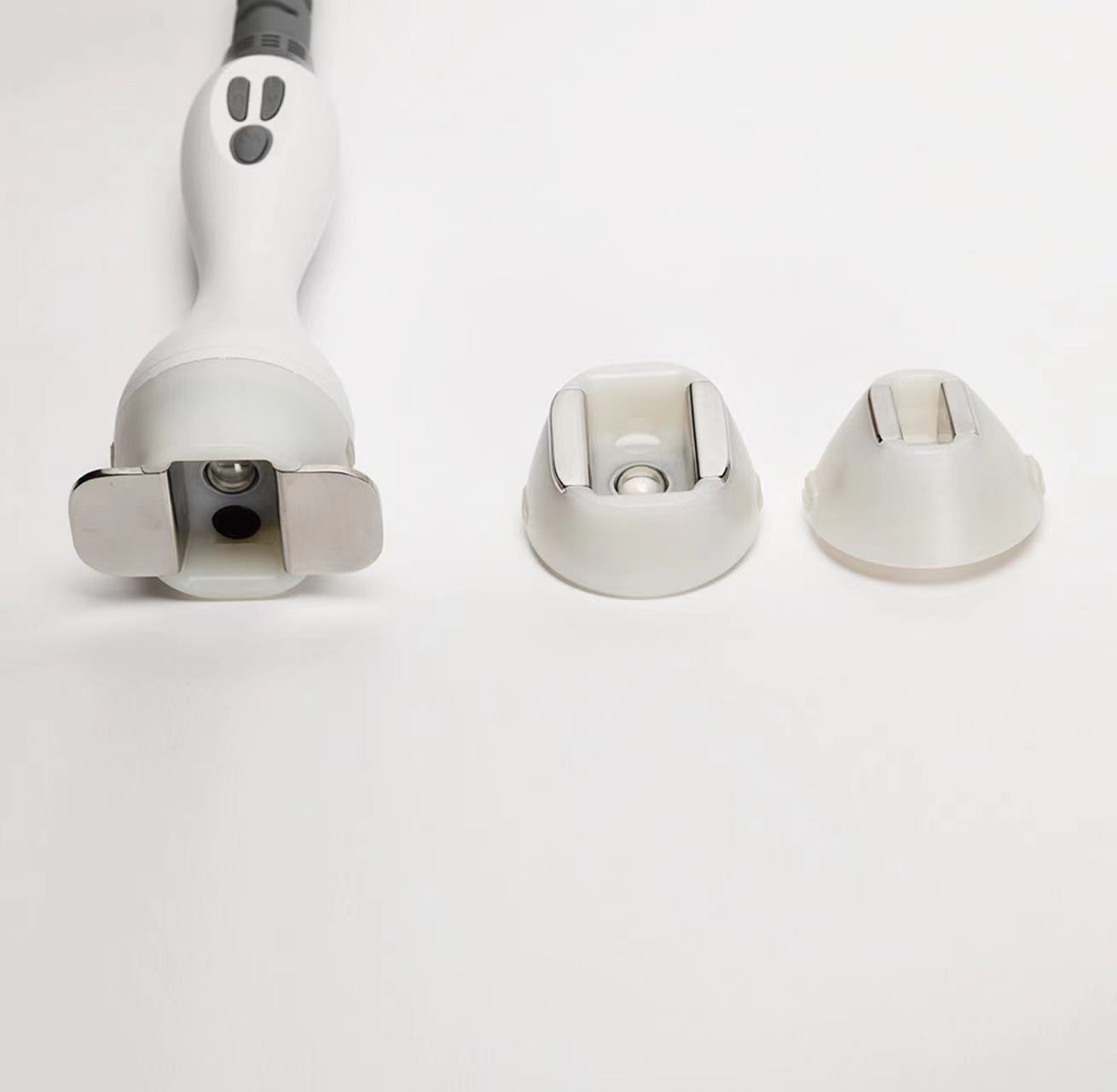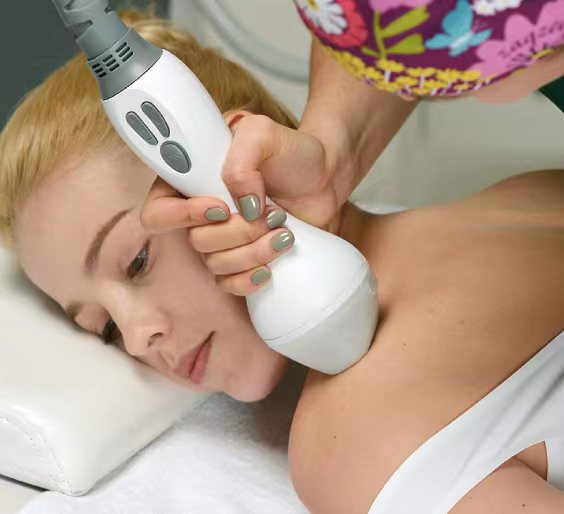Comprehensive Guide to Cryolipolysis How the Machine Works
A Cryolipolysis machine consists of several key components that work together to deliver the desired fat-reducing results. The most prominent part is the applicator, which is applied to the treatment area and provides the cooling effect. The applicator is connected to a control console that regulates the temperature and treatment duration. A vacuum system integrated into the applicator helps to draw the skin and underlying fat into the device, ensuring effective cooling. Additionally, safety sensors are embedded within the machine to monitor skin temperature and prevent frostbite or other complications.

How the Cooling Process Targets Fat Cells
The cooling process in Cryolipolysis is meticulously controlled to ensure maximum efficacy and safety. When the applicator is placed on the skin, it creates a vacuum seal that draws the tissue into the cooling panels. The temperature is then gradually reduced to the optimal level needed to crystallize fat cells without damaging other tissues. The cold exposure triggers the crystallization of lipids within the fat cells, initiating the process of cell death. Over the next few days to weeks, these dead fat cells are metabolized and expelled by the body’s natural processes, leading to a reduced fat layer in the treated area.
The Role of Temperature in Effective Treatment
Temperature plays a crucial role in the success of Cryolipolysis. The cooling must be precise enough to induce fat cell apoptosis without harming the surrounding tissues. Research has shown that the optimal temperature range for fat freezing is between -5°C and -10°C. Deviations from this range can either render the treatment ineffective or pose risks to the patient. Modern Cryolipolysis machines are equipped with advanced temperature controls and sensors to maintain this delicate balance, ensuring both efficacy and safety in every session.
The Sensitivity of Fat Cells to Cold
Fat cells are uniquely sensitive to cold temperatures compared to other cell types in the body. This sensitivity is due to the different thermal properties of lipids (fats) and water-based tissues like skin and muscles. While water-based cells can withstand colder temperatures without damage, fat cells begin to crystallize and undergo apoptosis when exposed to the cooling temperatures used in Cryolipolysis. This selective sensitivity is what makes Cryolipolysis effective, as it allows for targeted fat reduction without invasive procedures or extensive recovery times.
The Procedure of Cryolipolysis Treatment
Preparations Before the Treatment
Proper preparation is essential for achieving optimal results from a Cryolipolysis treatment. The process begins with an initial consultation and assessment by a qualified practitioner, who will evaluate the patient’s candidacy for the procedure. During this consultation, the practitioner will discuss the patient’s goals, review their medical history, and examine the specific areas they wish to treat. This thorough assessment ensures that Cryolipolysis is a suitable option and helps to tailor the treatment plan to the patient’s individual needs.
Initial Consultation and Assessment
The initial consultation is a critical step in the Cryolipolysis treatment process. It allows the practitioner to determine whether the patient is an ideal candidate and to set realistic expectations. During the assessment, the practitioner will measure the thickness of the fat layer, assess the skin’s elasticity, and consider any underlying health conditions that may affect the treatment. This comprehensive evaluation not only ensures the safety and effectiveness of the procedure but also helps to build a rapport between the patient and the practitioner.
Pre-Treatment Care Instructions
Before undergoing Cryolipolysis, patients are typically given a set of pre-treatment care instructions to follow. These may include guidelines on hydration, avoiding medications that could increase bruising, and refraining from using lotions or creams on the treatment area. Patients may also be advised to wear loose, comfortable clothing on the day of the procedure. Adhering to these instructions helps to minimize the risk of complications and enhance the overall experience and results of the Cryolipolysis treatment.
Steps Involved During the Session
A Cryolipolysis session involves multiple steps to ensure the most effective and comfortable treatment. First, a protective gel pad is applied to the skin over the target area. This pad acts as a barrier between the cooling panels and the skin, providing protection against cold burns. Following this, the applicator is positioned on the treatment site and the machine is started.
Applying the Protective Gel Pad
The protective gel pad is an essential component in the Cryolipolysis procedure, designed to safeguard the skin against extreme cold. The pad is typically infused with an antifreeze solution to enhance its protective qualities. It is applied directly to the treatment area, ensuring complete coverage. The gel pad not only prevents cold burns but also optimizes the transmission of cooling temperatures to the underlying fat cells, making the treatment more effective.
Cryolipolysis is now widely used in the beauty industry. Since its inception in 2003, Anchorfree has focused on the manufacturing of aesthetic and medical aesthetic devices based on laser, light-based, RF, vacuum, ultrasound, and EMS technologies. We are committed to developing and delivering high quality products with cutting-edge technology to our global partners and customers.
Benefits and Results of Cryolipolysis
Efficacy in Fat Reduction
Cryolipolysis is highly effective in reducing fat in localized areas. Clinical studies have shown that a single session can reduce the fat layer by up to 25%. Multiple sessions may yield even more significant results. The procedure is particularly effective for treating stubborn fat deposits that do not respond to diet and exercise. Patients typically begin to notice changes within three weeks of treatment, with the most dramatic results appearing after two to three months.
Typical Areas Treated with Cryolipolysis
Cryolipolysis can be used to treat various parts of the body where fat tends to accumulate. The most common areas include the abdomen, flanks, thighs, and arms.
Abdomen and Flanks
The abdomen and flanks are popular treatment areas for Cryolipolysis because fat tends to be more resistant in these regions. The procedure can effectively address love handles and belly fat, leading to a more contoured waistline. Typically, people who are within 10-20 pounds of their ideal weight but struggle with localized fat deposits are the best candidates.
Thighs and Arms
Cryolipolysis is also effective for treating the inner and outer thighs, as well as the upper arms. These areas are prone to developing fat pockets that can be challenging to eliminate through exercise alone. By targeting these regions, Cryolipolysis can help achieve a more toned and streamlined appearance.
Expected Outcomes and Timeframe
After undergoing Cryolipolysis, patients can expect gradual and natural-looking fat reduction. The process is not immediate; the body takes time to metabolize and remove the dead fat cells. Most patients see initial changes within three weeks, with the most noticeable results appearing two to three months post-treatment. The outcome is a permanent reduction of fat cells in the treated area, as long as a stable weight is maintained. Due to the non-invasive nature of the procedure, there is minimal downtime, allowing patients to resume normal activities almost immediately.
Safety, Side Effects, and Considerations
Common Side Effects
Like any medical procedure, Cryolipolysis comes with potential side effects, though they are generally mild and temporary.
Temporary Redness and Swelling
One of the most common side effects is temporary redness and swelling in the treated area, which can last for a few hours to several days. These symptoms are typically mild and resolve on their own without any intervention.
Sensation Changes in Treated Area
Patients may also experience changes in sensation in the treated area, such as numbness, tingling, tenderness, or sensitivity to touch. These changes are usually temporary and should resolve within a few weeks. It’s important to note that while these side effects are common, they are generally well-tolerated and do not interfere with the overall effectiveness of the treatment.
Long-term Safety Profile
Cryolipolysis has a strong safety profile with few reported long-term adverse effects. Studies have shown that the procedure does not adversely affect lipid levels in the blood or liver function. The treatment selectively targets fat cells without damaging surrounding tissues, making it a safer alternative to more invasive fat reduction methods. However, it is crucial to have the procedure performed by a trained and certified practitioner to minimize risks.
Impact on the Field of Aesthetic Medicine
Comparison with Other Fat Reduction Methods
Cryolipolysis offers distinct advantages over other fat reduction techniques.
Liposuction vs. Cryolipolysis

Liposuction is an invasive surgical procedure that requires anesthesia, incisions, and significant recovery time. While highly effective, it carries risks such as infection, scarring, and complications from anesthesia. In contrast, Cryolipolysis is non-invasive, requires no downtime, and has a lower risk profile. However, liposuction may be more suitable for those seeking to remove larger volumes of fat.
Laser Fat Reduction vs. Cryolipolysis
Laser fat reduction procedures use heat to destroy fat cells, which can also stimulate collagen production and tighten the skin. While effective, these treatments may require multiple sessions and can be less comfortable due to the heat involved. Cryolipolysis, on the other hand, uses cold temperatures and generally requires fewer sessions to achieve noticeable results.
Patient Satisfaction Rates
Patient satisfaction rates for Cryolipolysis are high, with many individuals reporting significant improvement in the appearance of treated areas. The non-invasive nature of the procedure, combined with its efficacy and minimal recovery time, makes it a popular choice for those seeking body contouring solutions. Studies and surveys consistently show that a majority of patients would recommend Cryolipolysis to others.
Through many years of operation, Anchorfree has formed an experienced and talented research and development teams. We will be continuously focused to develop the products with strong technical advantages and seek independent innovation and provide a high-class services for our partners and customers around the world.







